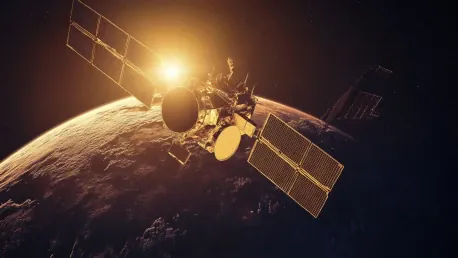Telecom connectivity remains elusive for billions of people worldwide, underscoring the urgent need for initiatives that ensure no one is left behind in an increasingly digital age. Sunil Mittal, the chairman of Bharti Airtel, an Indian telecommunication giant, laid out a compelling vision for how telecom sector consolidation and the strategic utilization of satellite technology could play pivotal roles in bridging this gap. His speech at Mobile World Congress (MWC) 2025 in Barcelona was a clarion call for reforms and innovations that aim at achieving global connectivity, particularly focusing on the 400 million people still lacking access to basic telecommunication services.
The Need for Telecom Sector Consolidation
Mittal pointed out the evolution of India’s telecommunication landscape, where the once fragmented ecosystem of 12 operators consolidated into three major players: Airtel, Jio, and Vodafone Idea. His discourse underscored the inefficiencies that come with fragmented operations, including redundant infrastructure like fiber highways and towers, which could be optimized through consolidation. When companies merge resources, they can capitalize on economies of scale, allowing them to invest more robustly in expanding and upgrading their networks. This strategic consolidation mitigates the risk of duplicative capital investments, freeing up funds to focus on reaching underserved and rural communities.
Mittal particularly emphasized the essential role government and regulatory bodies must play in this consolidation process. By incentivizing mergers and acquisitions through policy and offering subsidies or grants for rural connectivity projects, governments can actively contribute to forming a more cohesive and capable telecommunication environment. Regulatory bodies, on the other hand, must ensure that spectrum costs are reasonable, enabling operators to allocate funds more effectively toward infrastructure investments. Lowering these barriers allows telecommunication providers to not only maintain existing networks but also extend their reach into previously neglected areas, closing the digital divide.
Optimizing Investments in Infrastructure
Investment in infrastructure is vital for the sustainable growth of the telecom sector, and the idea of consolidation amplifies this necessity. According to Mittal, the current scenario depicts an industry where multiple players invest separately in similar infrastructure, leading to wastage of resources and time. Consolidated players can better navigate these pitfalls by pooling their resources, focusing on creating high-quality, extensive, and interconnected networks. This unified approach encourages an efficient use of capital, translating into enhanced connectivity for users at a lower collective cost.
Highlighting India’s progress post-consolidation, Mittal detailed how major players have been able to extend 4G and 5G coverage more effectively. By collaborating rather than competing, these companies have scaled up operations, improving service quality and reach. This kind of strategic synergy suggests that emulating India’s consolidation model in other regions could yield similar benefits, making telecommunication services more accessible and reliable globally. However, the industry must nurture this growth further through partnerships with satellite operators to cover remote and difficult-to-access areas.
Terrestrial-Satellite Collaboration
Satellite technology offers unmatched potential for reaching the remotest corners of the earth where conventional terrestrial infrastructure proves challenging. Mittal’s vision includes a seamless blend of terrestrial and satellite technologies, optimizing the strengths of both to ensure comprehensive coverage. Cooperation between terrestrial operators and satellite providers could lead to novel solutions, enhancing connectivity in areas where laying physical infrastructure is neither feasible nor economical. This integrated approach could resolve not only rural connectivity shortfalls but also prepare systems for resiliently handling natural disasters and other emergencies.
Such collaborations also promise to minimize the ongoing costs associated with maintaining vast terrestrial infrastructures. For instance, satellite technology can bypass many of the obstacles that hinder terrestrial networks, such as mountainous terrain or dense forests, making it possible to swiftly provide high-speed internet. Additionally, Mittal called for regulatory and financial incentives to foster these collaborations, pushing for lower taxes and affordable spectrum prices. Reducing these costs would make it more attractive for telecom operators to invest in satellite partnerships, delivering long-awaited connectivity to those in need.
Expanding 5G and the Role of Satellite Technology
Mittal’s vision extends beyond mere access; he envisions a future where high-speed internet through 5G can be universally accessible. Bharti Airtel’s strategic focus illustrates this ambition, having ended the year with 120 million 5G subscribers and newly directed investments in expanding their 5G network. By leveraging equipment from leading suppliers like Ericsson, Nokia, and Samsung, Airtel has significantly bolstered its network capabilities. Importantly, this expansion has also prioritized Fixed Wireless Access (FWA) services, extending high-speed internet to over 2,000 cities, a testament to the potential of integrated network strategies.
Re-farming Spectrum for Growing Demands
One of the critical operational strategies for expanding 5G coverage involves re-farming existing spectrum resources. Bharti Airtel, for example, has repurposed its mid-band spectrum, utilizing the 1.8 GHz, 2.1 GHz, and 2.3 GHz bands to meet increasing traffic demands on its 5G network. Re-farming not only optimizes existing assets but also speeds up the deployment of new technologies without requiring entirely new spectrum allocations. This strategy ensures that the growing number of users can enjoy high-speed and stable network connections, thus solidifying the foundation for widespread adoption of 5G.
This dynamic approach to spectrum management responds to the evolving digital ecosystem’s requirements, recognizing that traffic demands will only continue to rise. Efficiently harnessing existing spectrums while introducing new frequencies as needed ensures a seamless transition and robust network performance. As Mittal’s insights suggest, harmonizing such practices with government policies that support innovation and growth will be crucial in sustaining industry progress while making connectivity universally accessible.
Conclusion: A Collaborative Future
Telecom connectivity remains out of reach for billions worldwide, highlighting the urgent need for initiatives that ensure no one is left behind in today’s increasingly digital world. Sunil Mittal, chairman of Bharti Airtel, an Indian telecommunication giant, shared a compelling vision for addressing this issue. During his speech at Mobile World Congress (MWC) 2025 in Barcelona, Mittal discussed how the consolidation of the telecom sector and strategic use of satellite technology could bridge this connectivity gap. His address served as a clarion call for reforms and innovations aimed at achieving global connectivity. Specifically, Mittal emphasized the need to focus on the 400 million people who still lack access to basic telecommunication services. By combining resources and embracing cutting-edge technology, the telecom industry can make significant strides towards universal connectivity, ensuring that everyone can participate in the digital age.









